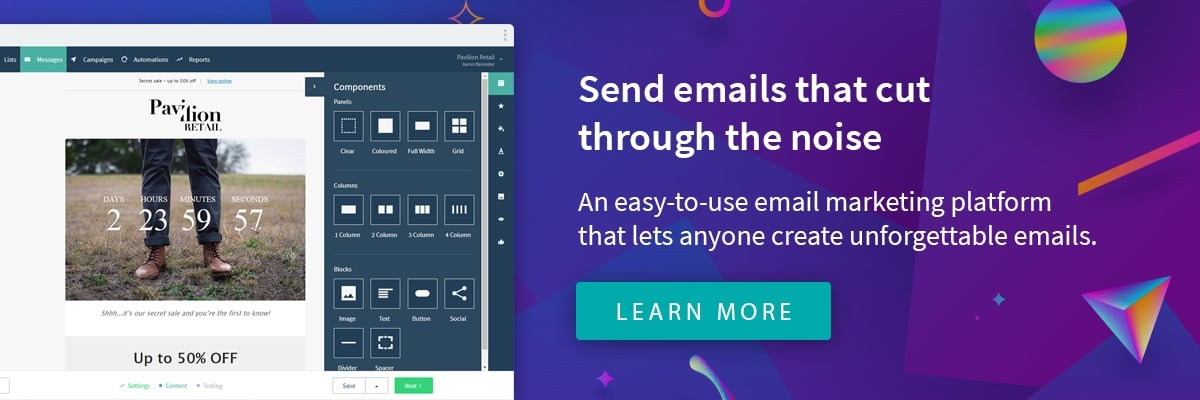Estimated to generate £29bn retail sales annually, email is an essential way to grow your revenue. But how do you get started with email marketing?
If email is new to you, you’re in the right place. This simplified email marketing guide will help you take your first steps towards mastering the channel.
Setting goals and defining your strategy
To get started with email marketing, first ask yourself what you want to achieve. Goal setting will help guide your strategy.
Your goals will influence:
- what campaigns you send
- which content you include
- who you target
- how you measure success
To set the right goals, consider your overall business objectives and how email can help you achieve these.
For example, does your business rely on demos being booked to sell its software product? If so, how could email help entice prospects to book a demo?
Growing your list
Email is a direct and effective way to reach your audience. But this only works if you have a healthy list of subscribers to reach.
Consider how you will grow your email list. One option is to use a combination of valuable content and unobtrusive subscription popovers.
To do this, create engaging content that answers search needs for your blog. Showing visitors value will entice them to sign up when your subscription popover appears.
Segmenting your data
Trying to appeal to everyone is a thankless task. Effective email marketing targets specific buyer personas or segments.
Personalising content for each segment makes it more likely to resonate. This is the best way to increase engagement and drive conversions.

To get you started, here are three ways you could segment your email list:
- demographics
- purchase history
- online behaviour
Mapping out your email workflows
Next, consider key moments in your customer’s journey that email could enhance. This will help you map out the email workflows you’ll need.
Using marketing automation, you can programme campaigns to be sent automatically when the customer does certain things on your website. These are called behavioural triggered emails.
Key moments in the customer journey that email can improve include:
- welcome campaigns
- browse and basket abandonment
- thank you for purchasing
- delivery information
- feedback request
- product care guide
- replenishment email
- renewal email
Designing your first campaign
Once you’ve decided on the workflows you need, get started on designing your first campaign.
Here’s a step by step breakdown of what to you need to do:
1. Consider device type
Does your audience mainly use mobile, desktop, or tablet? Make sure you design your emails with this in mind.

All emails should be responsive, but it helps to know where they are likely to be opened so you can optimise for this.
2. Decide on your message
Next up, decide on whether your message will be:
- transactional
- a notification
- a marketing message
Defining your message will help you design an appropriate format for the email.
3. Write your copy and source images
Now comes to writing your copy. Think about how you are going to grab your audience’s attention and influence what they do next.
The elements you have to play with include:
- subject line
- pre-header
- body copy
- calls to action
To complement your copy and increase engagement, source eye-catching images that emphasise your message.
4. Work on your design
When creating your design consider how users will interact with it. For example, if they are reading it on mobile are the key elements within reach of their fingers?
Key design elements to consider include:
- layout
- spacing
- buttons
- colours
- icons
- calls to action
5. A/B test send times
Once you have written, designed, and proofed your email, it is time to send it. But when should that be?
Try A/B testing send times to figure that out. A small percentage of your emails will be split across different times. The rest of your emails will be sent to the winner.
Measuring your success
To continually refine and improve on your email marketing success, it is important to measure results.
For this to be meaningful, make sure you measure the metrics that matter. This will vary between businesses.

Some key metrics that may be relevant to you include:
- bounce rate
- open rate
- click-through rate
- open-to-click rate
- unsubscribe rate
- conversions
Takeaway
We hope our simplified guide to email marketing has set you on the path to email marketing success.
You can learn more by grabbing a copy of The Complete Simplified Email Series Boxset. It includes a workbook to keep you on track.

